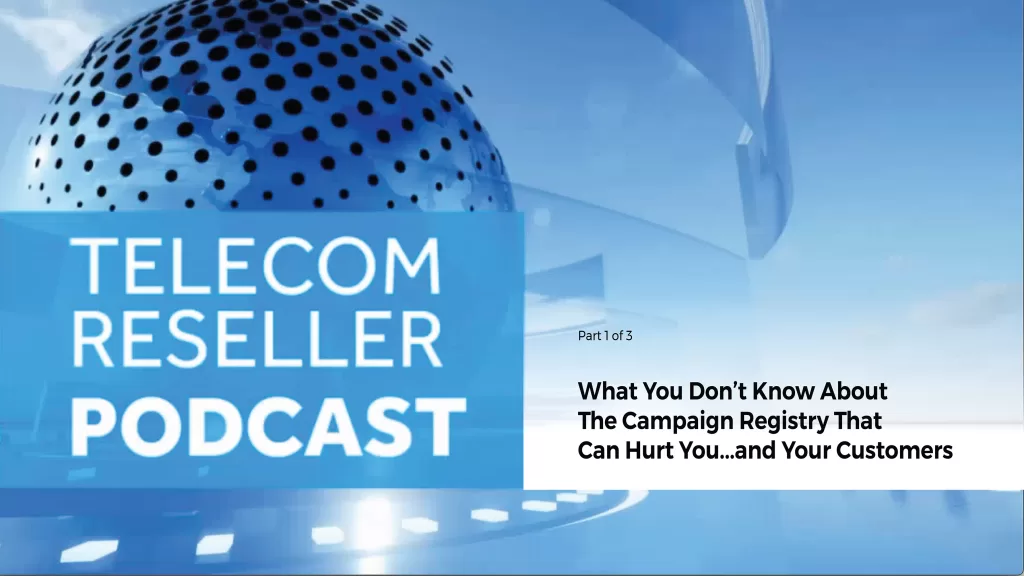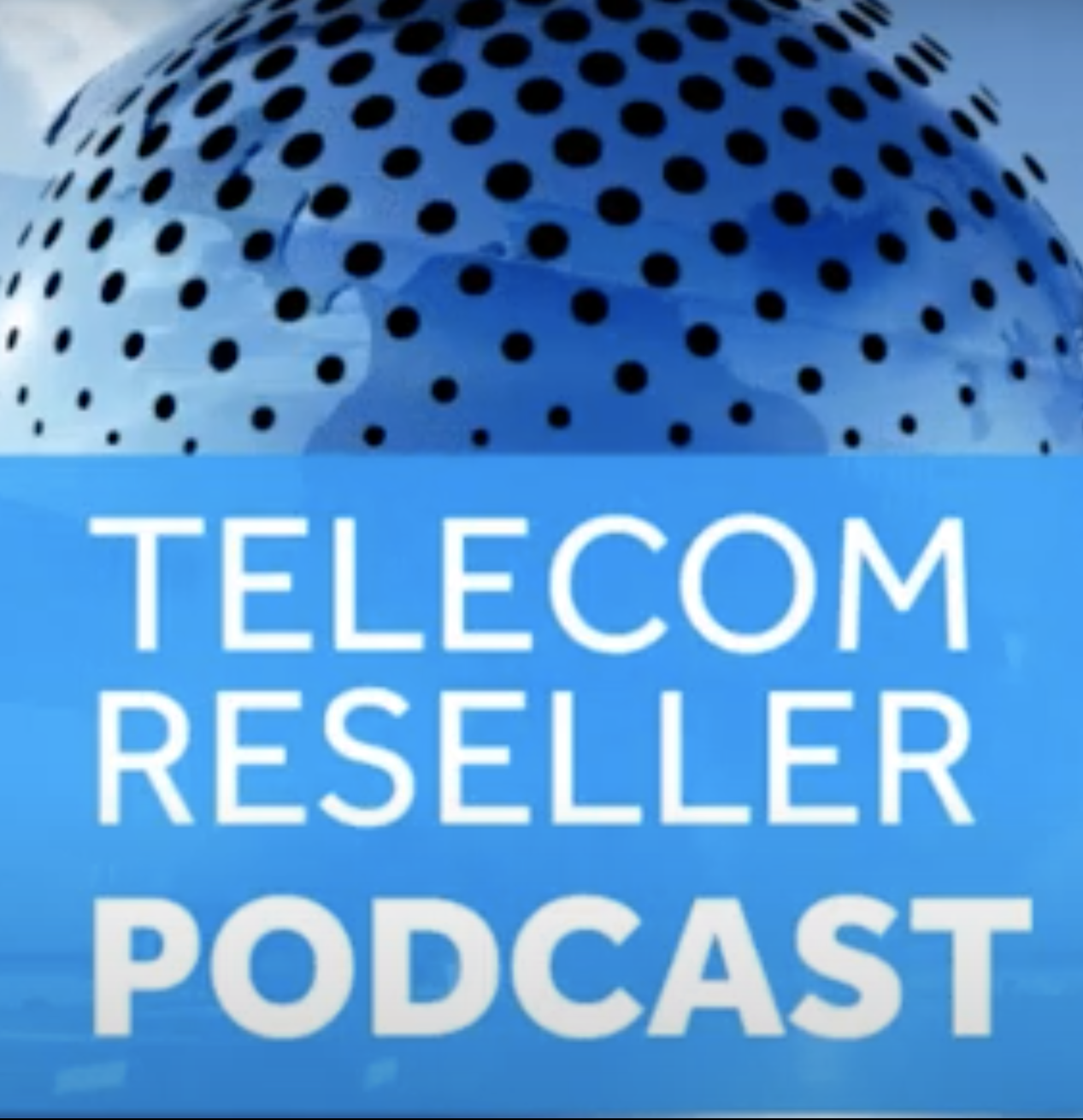
Doug Green from Telecom Reseller in conjunction with Cloud Communications Alliance interview Tom Sheahan in part 1 of a 3-part podcast series to discuss SMS regulations and how The Campaign Registry are making changes in the industry that everyone using application to person SMS software to send messages to customers or employees needs to hear about.
Podcast Transcript:
Doug Green:
This is Doug Green and I’m the publisher of Technology Reseller News, and I’m very pleased to have with us again, Tommy Sheahan, who’s the CEO and founder of Red Oxygen.
Tommy, thank you for joining me today.
Tom Sheahan:
Thanks for having me, Doug.
Doug:
Well, you know, we’re gonna be talking about something that’s in everyone’s life.
We’re gonna be talking about texting and SMS.
We’re gonna be doing a three-part series, small series on texting and regulation, and what everyone needs to know now, especially here in the MSP community and the cloud community.
So we’re gonna dive right into that.
Tommy, first of all, what is Red Oxygen?
Tom:
Well, we are the world’s first application to person text messaging company.
So we allow businesses to text, enable their applications, either from a CRM perspective or by one of our off the shelf components from Outlook, Gmail, SharePoint, and so forth.
Doug:
And we act as a managed service provider for all those ISVs struggling to deal with the new regulations, with the campaign registry from a client’s perspective, a billing perspective, and a delivery perspective.
Now, you know, as the saying goes, you were present at the creation. You, you were actually there when all this got started.
Tom:
Well, I, I fell in love with text messaging early on.
I was working on an IVR project for T-Mobile, or not T-Mobile, but Fox Foxtel in Australia. And they were spending $8 to send a notification saying, ‘Hey, we’re cutting your cable off.’ And I was like, why can’t you text ’em? Right?
And I came up with this idea and, and in the US, we were a US IVR company.
Text messaging was not available. It was not, did not work. It was not part of the conversation, uh, in the US for about a decade or so.
Doug:
So what is the Campaign Registry?
Tom:
So the Campaign Registry is a consortium of the CTIA, the members, uh, the carriers, Verizon, and T Mobile that are now set up to regulate, to stop spam. That’s the intent. And they are requiring any application to person messaging platform to be registered.
And when you register your, your application, you have to register, who are you texting? What is your EIN or DBA number, what is the content of your message and why are you texting? And then they’re vetted by third parties. And after you are vetted and approved, you receive a campaign registry id, and based on the volumes of messages, you pay a monthly campaign fee and an intercarrier fee per message to the carriers. And that’s usually paid through your CPaaS provider and so forth.
Doug:
So what’s the problem? That sounds like a great idea.
Tom:
It is good. The intent is good.
The problem is, it’s very onerous on, let’s say you’ve written some software for dance studios or home health services, right? And you’ve got a thousand home health agencies throughout the United States.
You have to register each one of these entities, right? It even could be a one man home healthcare provider, and you have to register their content. And that’s a very onerous process. You gotta communicate with all your customers.
And then you might’ve been giving these text messages away for free, but you don’t know how many text messages this home healthcare provider sent versus this one.
And then there’s different billing, right? So one may spend $5 a month, another one may spend $25 a month with the text messaging. And if you’re setting a flat fee per month for the software, how are you gonna manage that? So either you’re going to either bill telecommunication software into your platform to manage this, or you can partner with like a Red Oxygen that can help you with the billing and the compliance and the delivery.
And we’re coming out with AI, so making sure your message content is what you’re approved for. And so if there’s any variances in your message content, we will notify, uh, the subscriber, uh, of the variance to either start another campaign and to make sure they’re compliant because we don’t want your message traffic blocked, which is very scary. Or we also don’t want you to get fined potentially up to $10,000 per text message.
Doug:
So, Tommy, help help connect the dots. For me, it sounds like this is sort of really a carrier issue, but if I’m an MSP or a channel partner, even, maybe I’m an enterprise reader or watcher of RTR, how does this all impact me?
Tom:
Well, you’re, if you’re, if your traffic gets blocked, you know, let’s say you’re a home healthcare provider and you’re sending out text message notifications to say,
Hey, you know, hey, we’re running late. Uh, we didn’t give your mother her insulin shot. You know, what’s the travesty? Or, you’re a school, right? ‘Hey, your kid’s sick’. And the, and, and the, the nurse, the school nurse texts you from their platform and she says, Hey, pick up your daughter. She doesn’t get picked up. Right?
The implications are gonna be profound, and they’re not even gonna know that they’re happening.
One of the problems is there’s a communication issue. The problem we’ve had see in this space is the majority of the CPaaS providers have been selling to the developer. The developer doesn’t have an interest in compliance or billing, right? They had to get it working. They’re off and they’re moving on to another project.
So, once traffic starts getting blocked or fine start happening, we’re gonna see a major, uh, catastrophe in this space.
Doug:
Hmm. And conversely, is this an opportunity or is this some a calling maybe for the MSP community?
Tom:
Well, we all need to work together. So if anybody is listening to this and they, they they support, uh, ISVs, right? Uh, especially in the small business community, you know, the, the big corporate users and sending millions of messages, like I had lunch with the, the director of Lyft. Um, they’re fine. You know, they’ve got the resources to manage this, to handle the billing and so forth. It’s all the small and medium businesses that are sending text messages from their applications. They’re most at risk that don’t have the capacity. Nor nor do they wanna spend the resources staying compliant.
These variables are changing on a monthly basis, right? They were charging $50 for a setup fee, then they removed it, then the per campaign fees are, were a $1.50, and then they were $2. And now T-Mobile even wants to find people $250. They don’t use their network every 60 days. Well, no business wants to manage this. This is a nightmare for businesses.
So we see a huge opportunity to manage service provider world.
Doug:
Well in, uh, we’re now in the middle of a three parts series here. We’re gonna be exploring what the solution to that nightmare is. In our next one, we talk a little bit more about Red Oxygen’s approach and, and how, uh, they can help the MSP communities help their customers. And our third part is gonna be a little bit more public facing, public interest, maybe what is to be done, sort of rallying the cloud community to, uh, to work on this issue.
But briefly, Tommy, as we close up this part, what is the Red Oxygen approach?
Tom:
Well, we work with managed service providers to say, okay, hey, we’ve had one that has, you know, they sell to universities and universities are very risk-adverse. And then they’re like, Hey, we don’t wanna mess with this. ‘Here’s our customer base’. We presented at their user’s conference.
So they’ve been saying, ‘Hey, any of their users that want to implement text messaging, talk to Red Oxygen.’ So we work with the universities to make sure their message is compliant, make sure they’re registered, um, properly, they have the correct campaign registry id, and then we bill them for their usage, their fees, whether it’s a setup fee, a vetting fee, a per month, uh, campaign fee, and, and traffic fees.
Doug:
Tommy, I really want to thank you for joining us today. I hope everybody joins us in the next two parts, two parts of this three-part series.
Tommy, where can we learn more about Red Oxygen?
Tom:
Just go to www.redoxygen.com,or you can send me an email at, uh, tom@redoxygen.com.
Doug:
Tommy, thank you again. I’m gonna see you in part two.
Tom:
Alright, thanks.

























